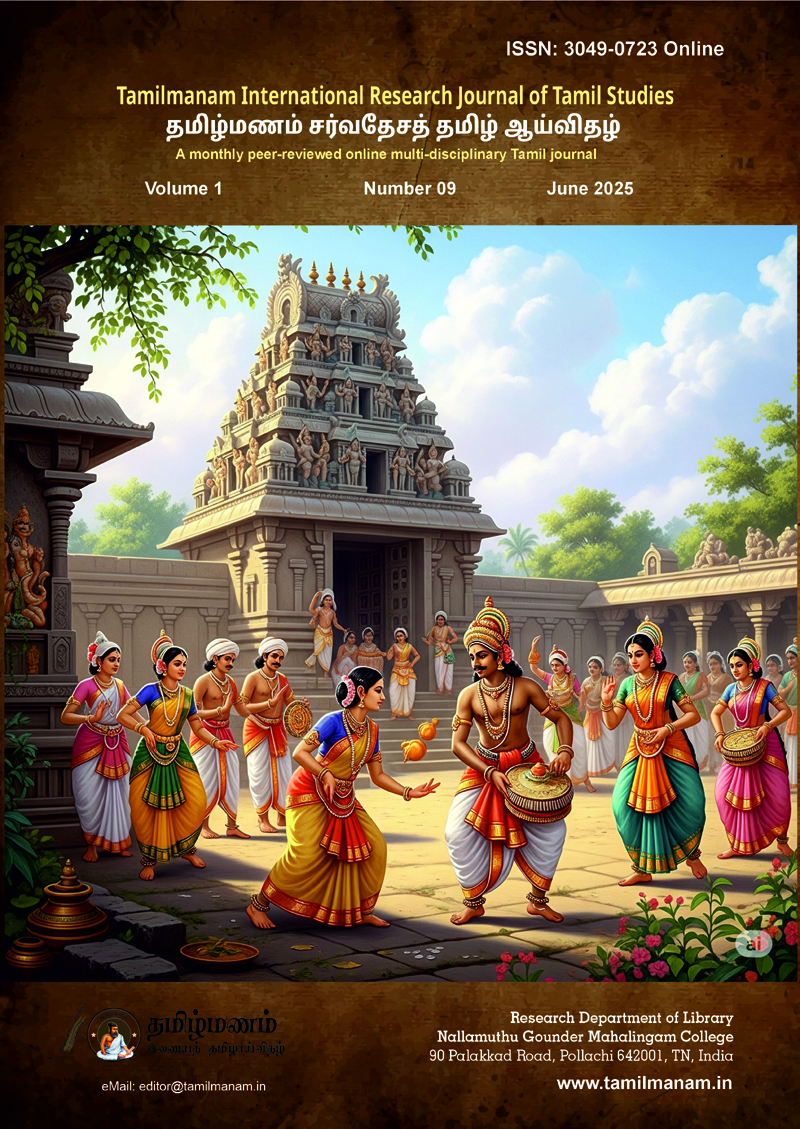ECOLOGY LANGUAGE TAMIL
சூழலியல் மொழி தமிழ்
DOI:
https://doi.org/10.63300/tm0109202502Keywords:
Classical language, theory of nature, renewable energy, biodiversity, civilizationAbstract
Language, the cornerstone of human civilization, has evolved from rudimentary forms like sign language, coded communication, and pictorial representation to sophisticated systems imbued with complex grammatical structures and rich literary traditions. These advanced languages, particularly those with a well-established written form, serve as potent indicators of societal progress and cultural refinement. This article delves into the fascinating relationship between language and the natural world, specifically examining how Tamil, a classical language boasting a profound grammatical and literary heritage spanning centuries, has deeply embedded within its structure a reverence for nature and its inherent values. It argues that Tamil exemplifies how ecology, as the fundamental source of sustenance and well-being for all life forms, including humans, has been linguistically encoded and celebrated. By exploring this connection, we can gain a deeper understanding of the vital role language plays in shaping our perception and appreciation of the environment, underscoring the importance of linguistic heritage in fostering ecological awareness. Key concepts explored include: the characteristics of a classical language, the linguistic expression of subordination to nature, the regenerative power inherent in natural systems, the value of biodiversity, and the contribution of language to the development of civilization.
Downloads
References
Nakkheeran, Tamil as an Ecological Language, Kadodi Publishing House, Nannilam, Thiruvarur – 610 105, p.120
Su. Bharathidasan, Carcass Vultures - Evaluation and Destruction, Paperback, Art Literature Ecology Magazine, November 15, 2021.
Natrinai Song No.7, Text by Dr. Kathir. Mahadevan, Kovilur Monastery, Kovilur – 630 307.
Arimapamagan, Ecology in Sangam Literature, Irasakuna Publishing House, Theeran Nagar, Trichy – 620 009. p. 56
Downloads
Published
Issue
Section
License
Copyright (c) 2025 திருமதி க. நந்தினி, முனைவர் இரா.சுப்ரமணி (Author)

This work is licensed under a Creative Commons Attribution 4.0 International License.
Our journal adopts CC BY License Creative Commons Attribution 4.0 International License http://Creativecommons.org//license/by/4.0/ . It allows using, reusing, distributing and reproducing of the original work with proper citation.






